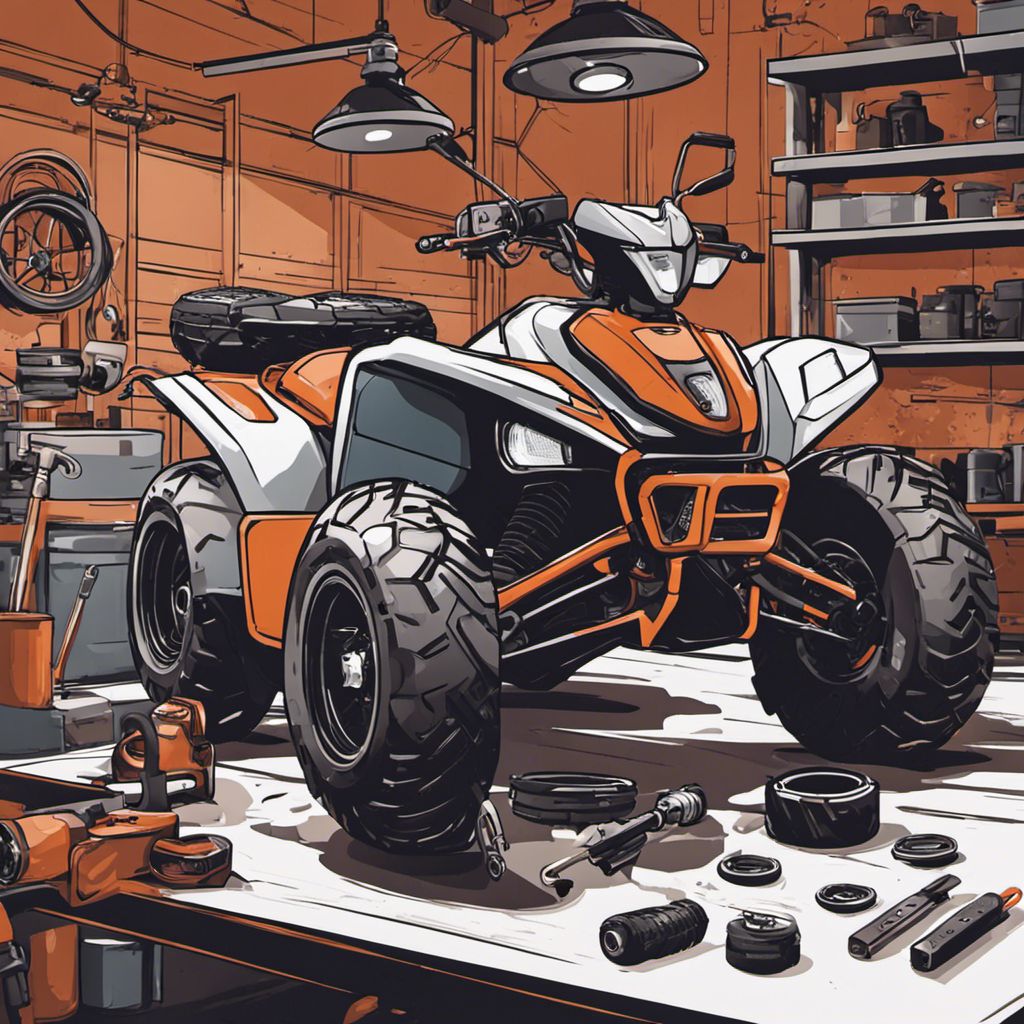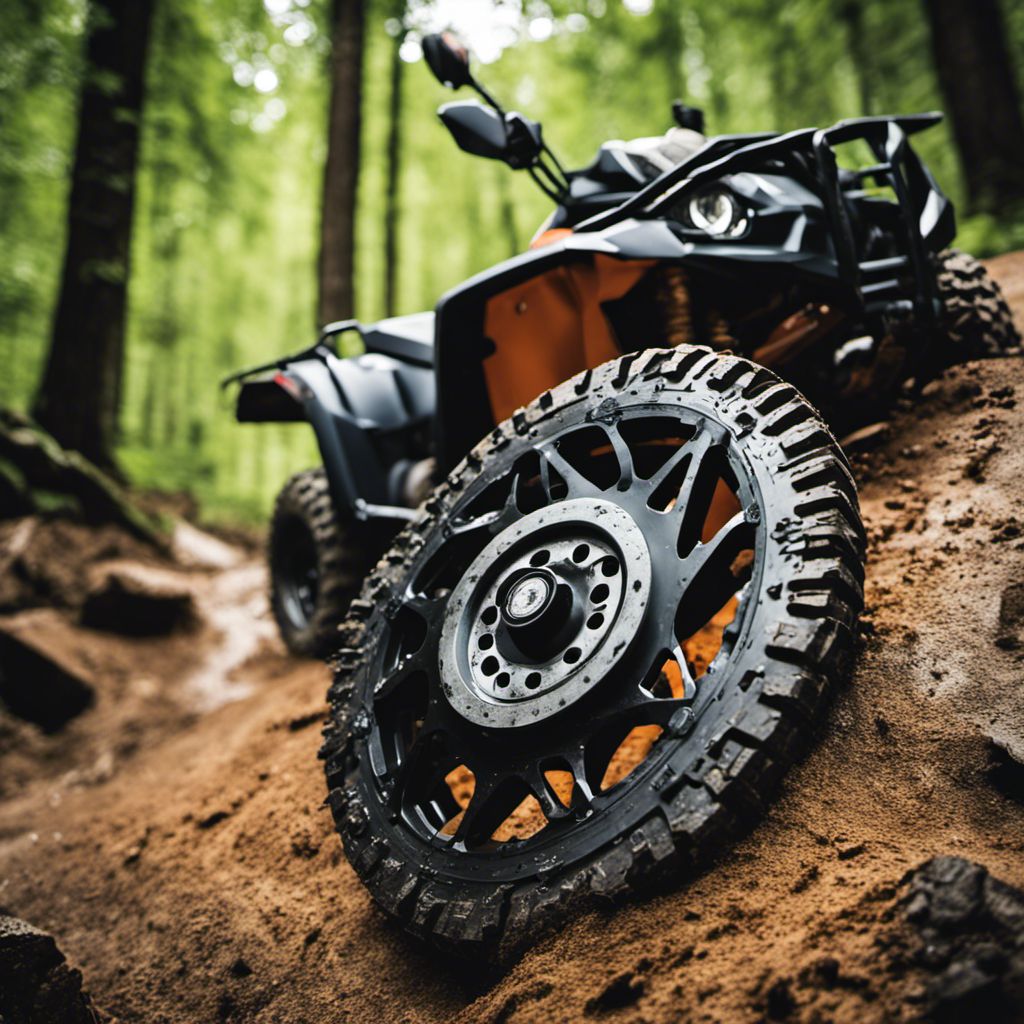I acknowledge that grasping the intricacies of ATV brake maintenance and safety can appear overwhelming. Having personally navigated these obstacles, and observing statistics within the industry indicating a substantial incidence of ATV accidents tied to worn-out or faulty brakes, truly underscores the critical nature of this matter.
In this blog, I’ll be sharing the wisdom accrued from my own trials by fire as well as extensive research into ensuring top-notch condition for your ATV brakes. So, buckle up and join me on an exciting expedition towards making every offroad escapade a safer endeavor!
Key Takeaways
- Always check your ATV brakes before riding. Look at the pads, calipers, and rotors.
- Follow what’s in your owner’s manual for good brake care. It tells when to inspect or change brake parts.
- Good riding helps your brake pads last longer. This means safe speed and using feet correctly.
- Get into a strong riding form for ATV safety. Keep head up, eyes alert, shoulders relaxed while holding tight to handles and keeping feet forward on footrests.
Understanding the Importance of Regular ATV Brake Maintenance

When it comes to ATV riding, prioritizing brake maintenance is non-negotiable. With regular checks and upkeep, we can protect ourselves on the trails by ensuring our brakes are performing optimally.
Notably, proactive maintenance helps us detect small issues before they escalate into bigger problems that could put us in harm’s way during a ride. Regular brake inspections and service according to the owner’s manual guidelines gives added peace of mind knowing our braking system is in good condition for safe offroad adventures.
Ensuring rider safety
Keeping ATV riders safe is our main goal. We stress the need for regular brake maintenance. It may seem like a small task, but it has a big impact on safety. A well-maintained brake system helps avoid risks and hazards while riding ATVs.
Just think how much safer you will be if your brakes work perfectly! This way, we can enjoy the fun of off-road riding without worrying about safety issues from bad brakes.
Identifying potential problems before they escalate
We need to spot issues with our ATV brakes before they get worse. This is a key part of brake maintenance. A regular check can help us find problems early. We look at the brake pads, calipers, and rotors often.
This way, we see if they are working well or not.
We should also watch for warning signs that say we need new brakes. This could be strange sounds when we use the brakes or they might not stop our ATV as quickly as before.
Let’s open up the owner’s manual of our ATVs too! It gives helpful tips about the braking system which can alert us to future troubles.
Taking care of our ATV means looking after its brakes too. They keep us safe on each ride and preserve optimal riding conditions across different terrains.
Tips for Maintaining ATV Brakes

Before every ride, take a moment to conduct a routine inspection of your brakes. Always follow the guidelines laid out in your owner’s manual for brake maintenance; it has specific advice tailored to your model.
By adopting proper riding habits, you can extend the life span of your brake pads and enhance overall safety.
Routine inspection before each ride
It’s vital to do a routine inspection before each ride. Here’s what that might look like:
- First, we start with a quick brake system check. It takes about five to ten minutes.
- During this time, we closely look at the calipers, pads, and rotors. We make sure they are in good shape.
- This step helps us see any problems early on so we can fix them right away.
- We also make sure to follow the owner’s manual guidelines. It has important tips for keeping our ATVs safe and running well.
- Regular maintenance not only keeps us from getting hurt or stuck somewhere, but it also helps our ATVs last longer.
Maintenance as outlined in the owner’s manual
We often rely on our ATV owner’s manual for all kinds of maintenance details. It is full of helpful guidelines that keep the ATV in top shape.
- The manual tells us when to inspect the brakes. Regular checks help find small problems before they grow.
- It shows us how to clean and change brake pads. Dirty or worn – out pads can make stops less safe.
- The guide helps us adjust brake levers for a comfy fit. Well – adjusted levers give us more control on rides.
- It advises us on choosing and using the right tools. Proper tools help avoid damaging brake parts by mistake.
Proper riding habits to prolong brake pad life
We need to keep some things in mind to make our brake pads last longer. With good riding habits, we can boost the lifespan of our ATV brake pads.
- Keep feet on the bike’s footrests at all times. This gives us better control when we have to use the brakes.
- Avoid full stops from high speeds. This puts a lot of strain on the brake pads and makes them wear out fast.
- Try controlling our speed. High speed leads to early brake pad wear.
- Make sure to get routine checks for our brake pads so we know when they need changing.
- Not only the pads, but other parts like rotors and calipers also need regular check – ups.
ATV Riding Safety Tips
When it comes to ATV riding, some safety tips are indispensable: always carry out a pre-ride inspection, adhere to speed limits and maintain a safe following distance. Remember, your posture and riding position matter greatly for controlling the vehicle effectively.
Importance of the pre-ride inspection
Before we hop on our ATVs, a pre-ride inspection is vital. It helps you spot any brake issues right away. You need to check the brake pads for wear and tear. Look at the brake lines too.
If they are cracked or leaks, it can be risky. So, fix them first before your ride. Your parking brake should lock your ATV’s wheels properly as well. A good pre-ride inspection ensures safety and fun in off-road riding adventures.
Following speed limits and maintaining safe following distance
We put a lot of stress on following speed limits and keeping a safe distance. It plays a huge role in ATV riding safety. Let’s take a deep dive into this:
- Stick to speed limits at all times. This helps us stay safe and keeps accidents away.
- Never go faster than the trail or your skills allow. Going too fast may lead to big problems.
- Keep enough space between you and the next rider or object. This gives us time to react if something goes wrong.
- Always think about your reaction time. More room means more time to stop or swerve.
- Avoid crashing into others by keeping distance from them on the trail.
- Lowering speed and keeping space cuts the risk of bad things happening.
Correct posture and riding positions
We all need to use the right posture and riding positions on our ATVs. Our safety depends on it. Let’s talk about a few things you can do.
- Keep your head up: Look far ahead, not just at the ground in front of the ATV.
- Use your eyes: Your eyes should scan the path, watching for any changes or risks.
- Relax your shoulders: Don’t hunch over or tense up while driving.
- Hold tight: Always have your hands firmly on the handlebars.
- Feet position: Put your feet on the footrests with toes pointing forward.
- Correct knee placement: Keep your knees close to the ATV; this helps control it better.
- Be ready to move: You might need to steer or shift quickly to avoid an obstacle.
Conclusion: Keep Your ATV and Yourself Safe with Regular Brake Maintenance
So, take care of your ATV and it takes care of you. Keep the brakes in good shape. This keeps you safe on rides. Make brake checks a part of every ride prep.
FAQs
1. Why is it important to maintain ATV brakes regularly?
Regular maintenance of ATV brakes is key for safe riding and to prevent accidents.
2. How often should I check my ATV’s brake system?
You should check the brake system of your ATV every month or before each ride, whichever comes first.
3. What signs show that my ATV needs a brake service?
Signs like weird noises when braking, a spongy feel in the brake lever, or your ATV not stopping quickly might mean you need to service your brakes.
4. Can I maintain my own ATV’s brakes?
With some basic skills and tools, you can perform simple tasks like changing the brake pads on an ATV at home.
5. Is it costly to do regular maintenance on my ATV’s brakes?
The cost can vary based on what job needs doing but spending money on regular checks could save you from more expensive repairs later.

